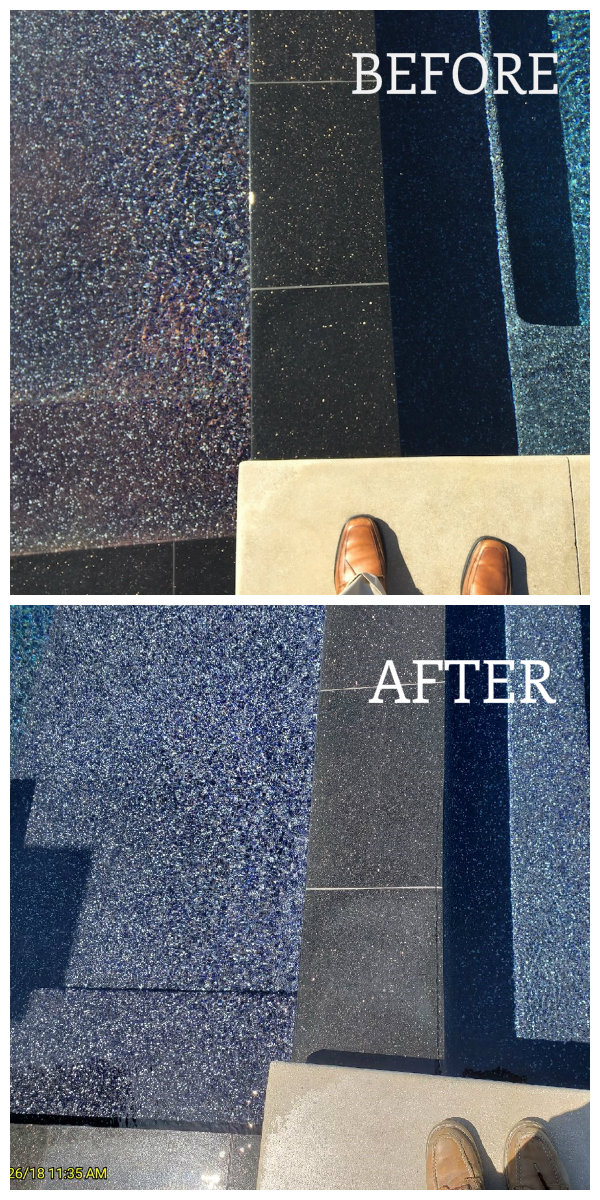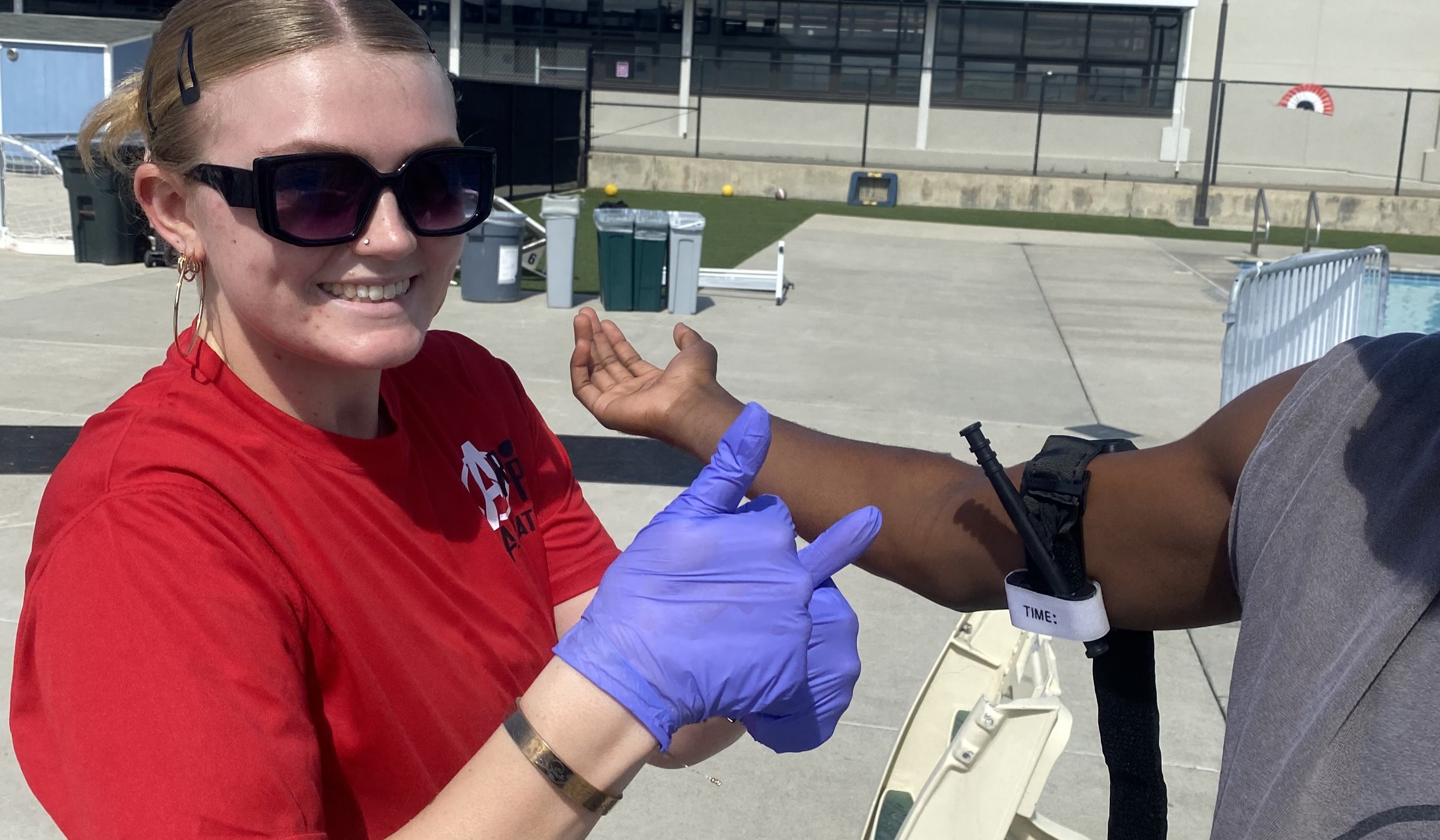
Before photo courtesy Matt Hedman; After photo courtesy Payan Pool Service
The top photo shows the discolored pebble finish (left side of the photo, on an entry bench). The blue cement binder had turned brick red. The lower image shows the finish after the water received a several-day-long treatment and brought the finish back to blue.
Service professional Javier Payan was facing a problem that didn’t seem to have a solution.
A client had been complaining about discoloration on his glass-bead-finish pool. It was occurring on a shallow step. Payan looked at the pool but didn’t think it was a big deal: He figured the mauve-like tone was the result of some minor discoloration. He didn’t understand his client’s anxiety.

Photo courtesy Payan Pool Service
While the blue aggregate muted it somewhat, the cement binder between the beads and pebbles had turned a brick red.
“Then they said, ‘No, no, this used to be blue,’” says Payan, president of Payan Pool Service in El Cajon, Calif.
The exposed aggregate kept the discoloration from looking too drastic. But when you looked up close, you could see that the cement binding the beads was a brick red.
Payan tried acid, he brought colleagues to look at it — all to no avail. He asked if the homeowner could live with it. No way, the customer said, he was a perfectionist and it was driving him crazy. If he had to replace the finish at the estimated $18,000, so be it.
In the hopes of avoiding such a drastic measure, Payan called in Greg Garrett, director of technical services for the National Plasterers Council and owner of Applied Materials Technology in Chandler, Ariz. He scratched the surface of the material with a dental pick and found blue underneath. He noted that the pool was sanitized with ozone and a salt chlorine generator, and that a nearby spillway generated significant volumes.
After some research, Garrett found that a red cobalt mineral exists in nature, called spherocobaltite. As it turns out, the nearby spillway was oxygenating the water, driving off carbon dioxide. That, in concert with the ozone and salt system, drove up the pH, causing the surface reaction.
Garrett suggested performing a zero-alkalinity process on the pool, which would require administering about 10 gallons of acid into the pool and holding it for seven days. Payan warned the homeowner about the risks and had him sign a liability waiver.
After a few days of doing the process and monitoring the pool, the red was gone. To manage the issue, Payan plans to install an ORP/pH controller.
“They thought either there was something defective in the material or that Javier and his company were doing something wrong,” Garrett says. “But, no, this was a perfect storm of events that created color change in the surface.”


